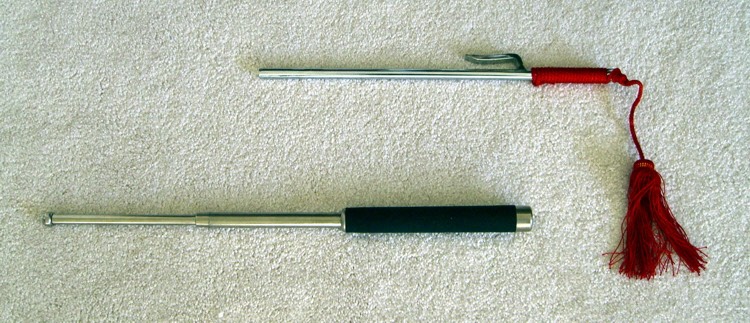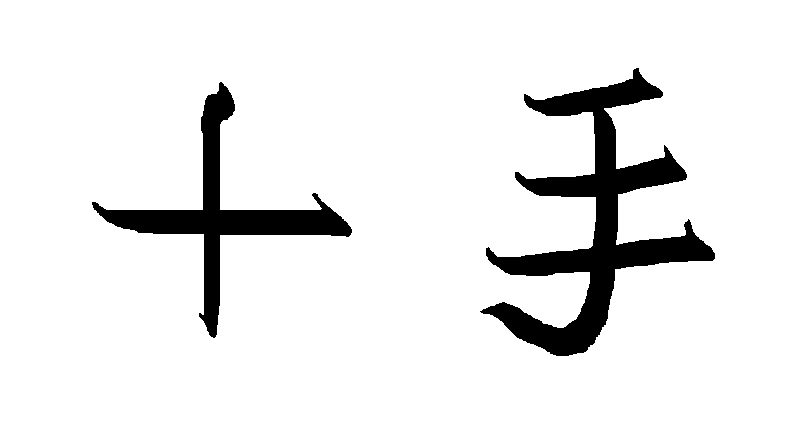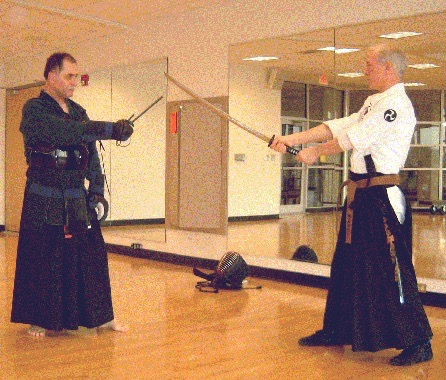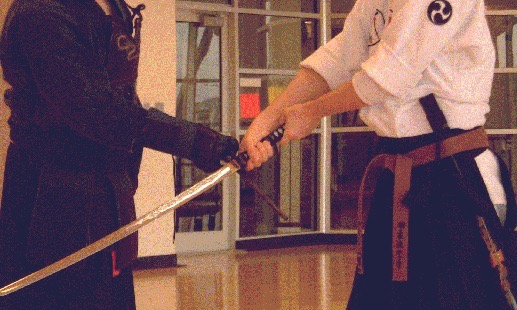Jutte (Ju-Te): The "Power-of-Ten-Hands” Weapon

Jujitsu means literally "The Gentle Art" - it is designed to be a defensive martial art. A Jujitsuka never starts a fight - a Jujitsuka is trained to END a fight. It is perhaps instructive to learn that an important element of the Samurai warrior tradition of Japan was necessarily defensive in character. In Feudal Japan, it was a crime punishable by death to bring a sword into the palace of the Shogun. This law applied to everyone, including the palace guards. However, palace guards had to have some means of dealing with potential assassins, belligerant drunks, etc. that might somehow make their way into the near proximity of the Shogun's person. We know that several kinds of non-sword, mainly defensive weapons were carried by these palace guards, but one was particularly effective and ultimately evolved to become the distinguishing symbol of a palace guard's exalted position: the Jutte.
We know of these elegant but subtle weapons from several sources, including the following 300-year-old print. The guard holds between his teeth a Jutte (from "Ju", meaning ten, and "Te", meaning hand or hands), translated as the Power-of-Ten-Hands weapon. The red cord wrapped around the tang indicates that this is a regular guard, not an officer; an officer's Jutte tang would have purple cord wrapped around it. The length of rope in the guard's hands is intended to bind the defeated attacker.

Jutte are readily available today: you can buy one from a martial-arts supplier for as little as $20 or as much as $150. In appearance a Jutte seems little more than a steel bar with a hooked flange on one side. However, this small, unassuming weapon in the hands of a skilled practitioner can be used to disarm a swordsman, to maim him, and even kill him. Hard to imagine: a small steel bar winning a contest against the famed katana of Japan, perhaps the most effective and feared sword ever developed. The following images show several ways this can be done.
The techniques you will see here are just a few limited examples; much more can be found in the book "Jutte" by Professor George Kirby.
This demonstration took place at the Reston YMCA, and was put on by Sensei Bruce H. Jones of the Reston Budoshin Jujitsu School, with help from Jeff Wynn, one of his students. That's a real katana, by the way.
Swordsman and defender square off. Sword is positioned at Chudan for a thrust to the throat.

Sensei Jones meets the katana with his Jutte (in this case, a black, octagonal version of the weapon) in mid-stroke, using Tai-Sabaki (an angled side-step) as he deflects the descending blade and engages the katana, preferably sliding the Jutte down to the komen, the guard above the tang.
Detail: the Jutte engages the katana just above the tang and is used like a wrench to twist the sword. A practitioner of Jujitsu will immediately see where the Kote-Gaish (wrist-lock) technique in Jujitsu evolved from.

The twisting motion continues: the leverage granted by the Jutte is 10 times more powerful than hands alone. The swordsman is forced to surrender his control of the sword - if he doesn't both wrists will be broken - as he also loses his balance.
The inevitable result - note where the HAI, the sharp edge of the blade is now positioned. Note also who controls the katana at this point.
An alternative approach - disable the sword-hand in down-stroke (the analog of "KOTE" in Kendo) and charge on into the attacker. The stroke to the head is the same as the classic "MEHN" in Kendo - a kill-strike.
Another alternative: The Jutte-wielder anticipates the downward stroke of the katana and jumps in ("aiki-jump-step") to catch the tang of the katana and/or wrist (kote) of the attacker with the Jutte held horizontally...
...and suddenly the attacker finds his weapon turned behind his own back. He is trapped.
Or, alternatively, the Jutte-wielder can then jump beneath the heavier, slower-moving sword and use the Jutte as a pointed weapon against the throat, mouth, or eyes. This contest is over.
The tradition lives on. The traditional weapon associated with Budoshin Jujitsu is the Jutte, bringing together in a tangible form the ancient Samurai self-defense traditions that Jujitsu evolved from. From the Jutte evolved other weapons, including the Taiho, the spring-loaded steel baton carried for many years by Japanese police. Today, the most advanced evolutionary manifestation of the Jutte is found in the expandable steel batons (such as the well-known ASP baton) carried by police in the United States and, increasingly, elsewhere in the world including Japan. Advanced students in the Reston Budoshin Jujitsu School receive extensive training and certification in the safe and effective defensive use of an expandible steel baton from our Sensei, a police martial arts Shihan.
This URL is http://www.budoshinjujitsu.org/JutteFeb2001.html
Last updated 13 December 2001 (jcw)